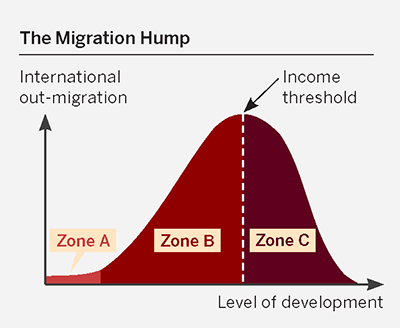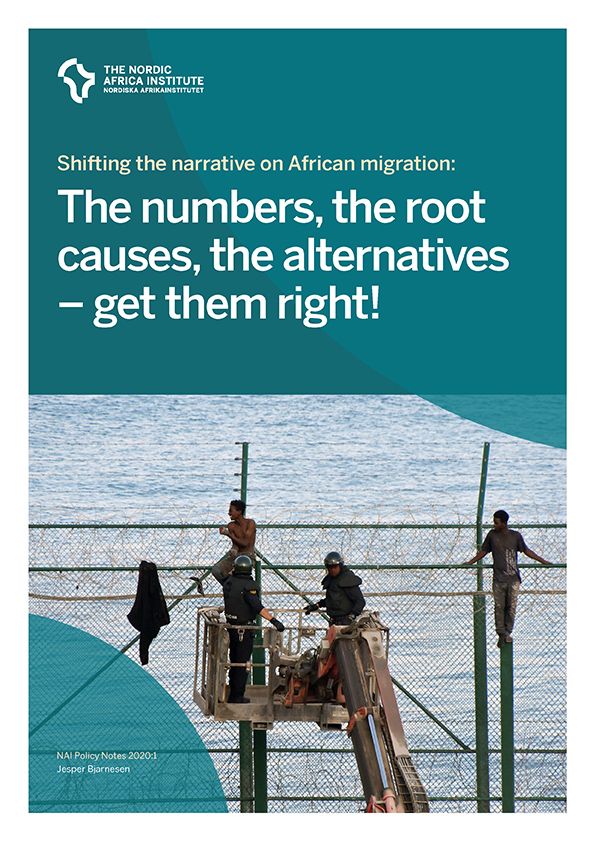African migration: Numbers, motivations and 'root causes' – get them right!

Spanish Civil Guard officers use a boom lift while African migrants sit on top of a border fence as they attempt to cross into Spanish territories, between Morocco and Spain’s north African enclave of Ceuta, August 2019. Photo: Reuters / TT Bild.
Negative public opinion in Europe is a major obstacle to holistic and sustainable policies on African migration. A new policy note from NAI argues for a shift away from politicised opinions about immigration, or misplaced ideas of humanitarian responsibilities, towards a more constructive and pragmatic focus on labour migration management.
"Shifting the narrative implies moving public debate from difficult political and moral discussions about Europe’s humanitarian responsibilities towards a more technical and practical discussion of labour migration management", says Jesper Bjarnesen, senior researcher at NAI and author of the policy note Pdf, 5.9 MB, opens in new window..
Pdf, 5.9 MB, opens in new window..
In four main arguments, Bjarnesen explains why we need to shift narrative:
1. Get the numbers right
- Most African migrants who enter Europe do so legally.
- African migration to Europe has been fairly constant over the past decade.
- The total percentage of African migrants in relation to the African population
has not increased significantly over the past 60 years. - The majority of African migrants remain in Africa.
- In a global comparison, the proportion of African migrants is quite low.
2. Get the motivations right
- Irregular migration is no one’s first choice.
- Most migrants are driven by the motivation to work, study or join their families
Irregular migration is no one’s first choice. - The more difficult it is to enter a country, the longer the migrant is likely to stay.
- African migrants are important development entrepreneurs.
- Europe needs African migrants.
3. Get the “root causes” right
- The fundamental driver of South-North labour migration is inequality, not poverty.
- Increased development investments in poverty reduction will lead to more, not less migration from Africa ("the Migration Hump").

Migration theory has established a generalised understanding of the correlation between income level and migration, which confirms that the highest migration rates occur not at the lowest levels of development (Zone A), but rather at the intermediary level (Zone B), where income levels are still significantly lower than in the host country but high enough to finance the migration endeavour. The same reasoning shows that once a relative income threshold is reached, migration rates tend to decrease with continued rise in income level (Zone C). This model is usually referred to as the “migration hump” because of its inverted U shape.
4. Get the alternatives right
- Aspiring labour migrants need other options than irregular migration and asylum seeking.
- The SDG agenda refers to the legal principle of universal human rights – not to a moral or humanitarian responsibility.



